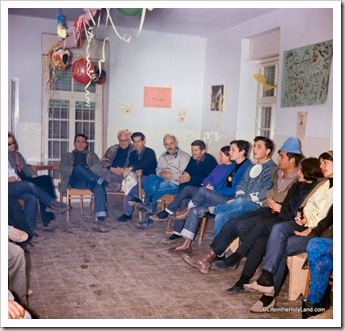Today the feast of Purim is celebrated in Jerusalem (it was yesterday elsewhere in the world), and the Jerusalem Post carries a column on a site in Iran that tradition identifies as the tomb of Mordechai and Esther. Iran has thus far been outside of my areas of travel, so I do not have anything to contribute to this particular discussion. The Book of Esther is one of the most brilliant literary compositions, and as I read through it with family and friends on Monday night I was struck by Mordechai’s words to Esther: “For if you keep silent at this time, relief and deliverance will rise for the Jews from another place, but you and your father’s house will perish” (4:14). My first response was to marvel at the way that God has protected his people, time and again, over the millennia. My later response was to consider the striking parallel with the rise of a new Persian threat against Israel and those who will or will not act to stop it. I will leave that for your own consideration and quote here the first few paragraphs of the JPost column by Michael Freund:
A few months ago, the normally hostile Iranian regime took the rather unusual step of adding a Jewish holy site to its National Heritage List. On December 9, 2008, Iranian news outlets reported that the tomb of Mordechai and Esther, the heroes of the Purim saga, would now be under official government protection and responsibility.
The move cast a brief spotlight on the site, which is well-known to Iranian Jews but largely unfamiliar to those outside the country. And with Purim being celebrated this week, it is worth taking a moment to ponder this relic of our ancient past.
The mausoleum housing the shrine of Mordechai and Esther consists of a simple brick structure crowned with a dome which was built five to seven centuries ago over the underground grave sites. It is located in the northwestern city of Hamadan, about 335 kilometers west of Teheran. According to tradition, Hamadan is believed to be the site of the city of Shushan, which played such a central role in the events described in the Book of Esther.
The column continues here.
 Purim Party, Megiddo excavation team, March 1967
Purim Party, Megiddo excavation team, March 1967 with Yigal Shiloh, Immanuel Dunayevsky, Yigael Yadin, and Amnon Ben-Tor
UPDATE: A.D. Riddle sends along a Google Earth placemark (kmz) and a link to the shrine at the city of Hamadan’s website.
